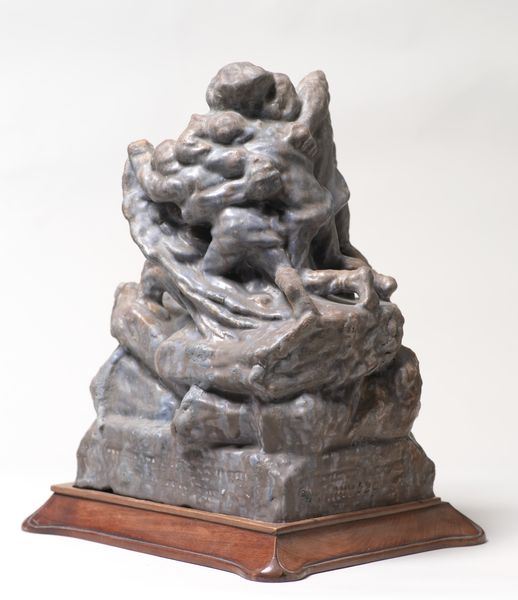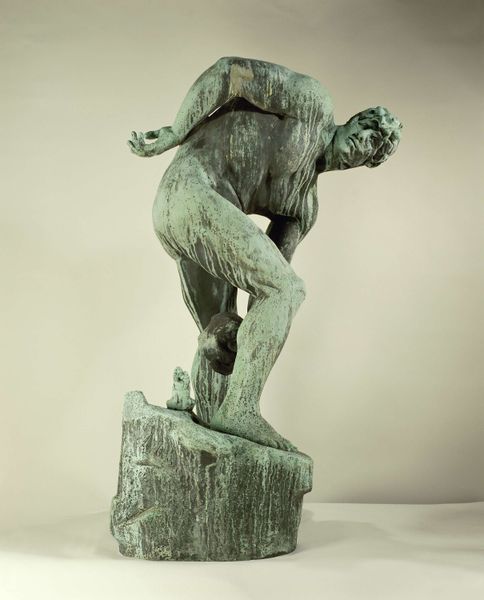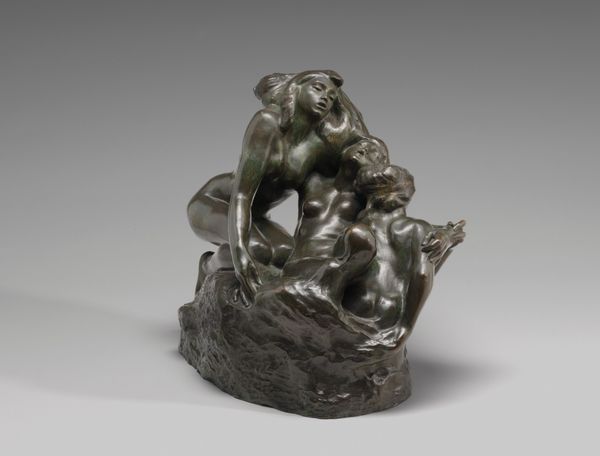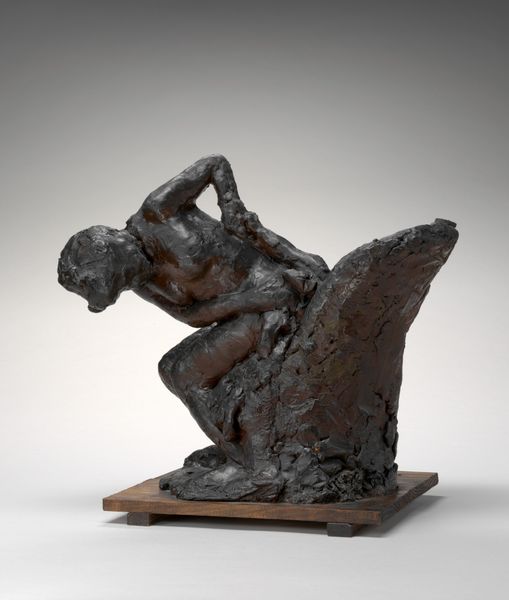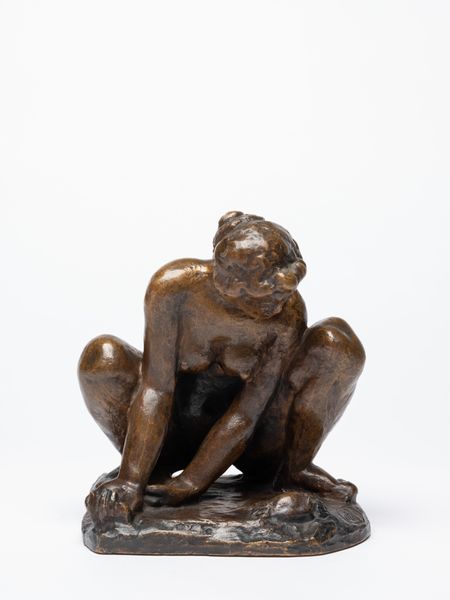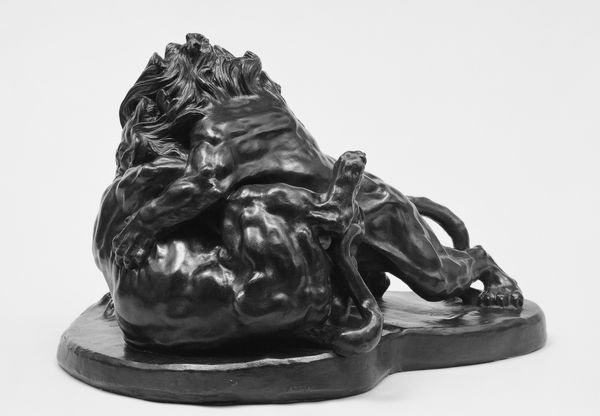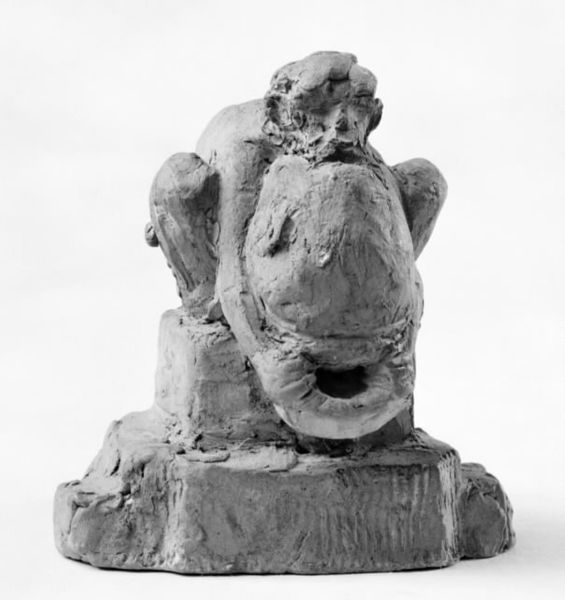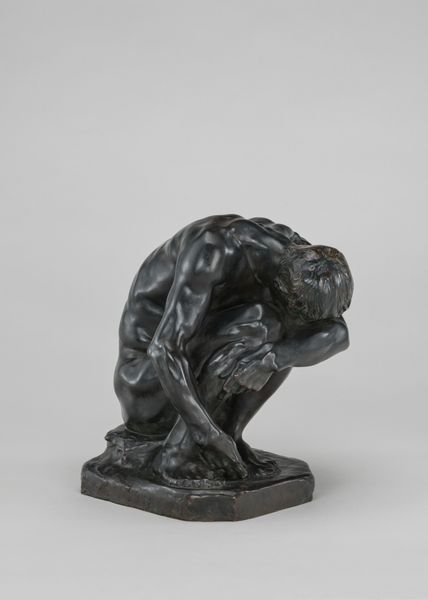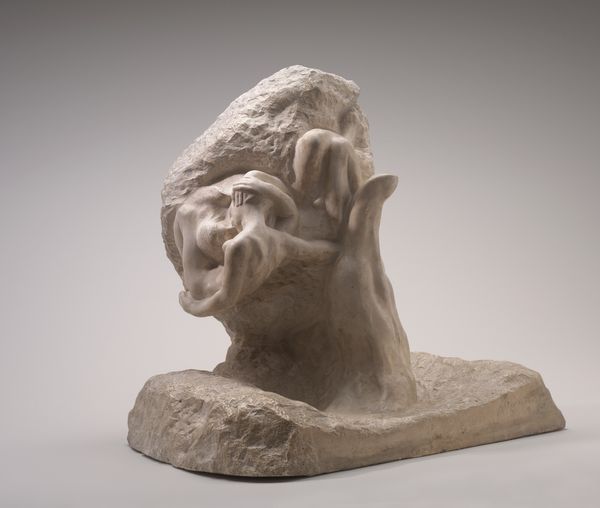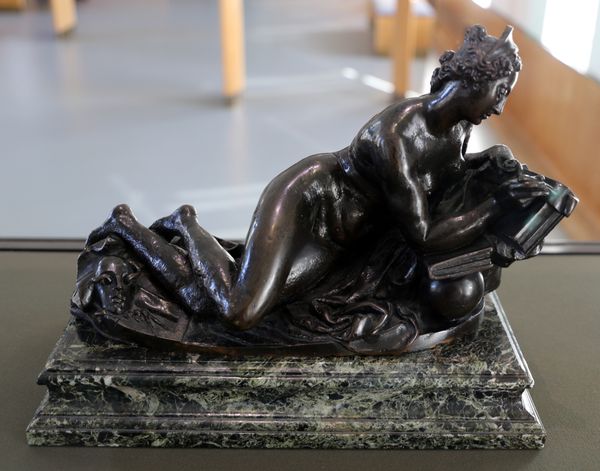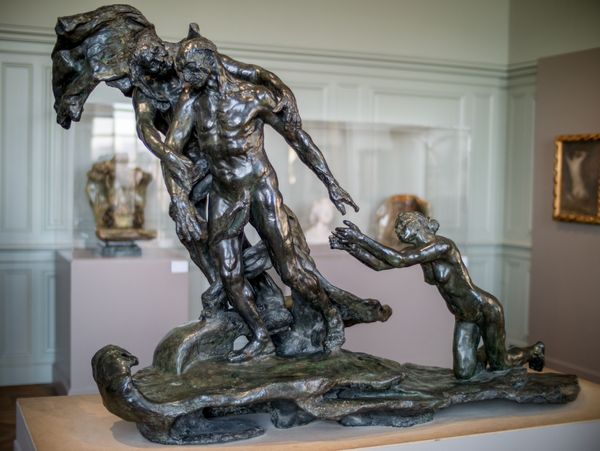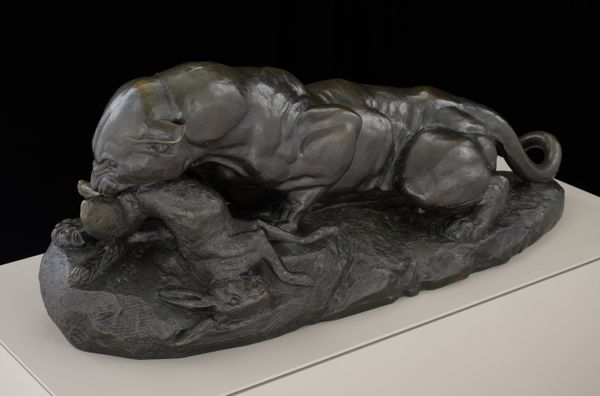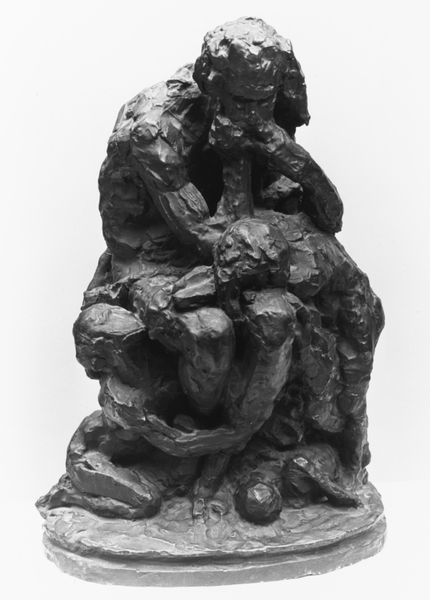
bronze, sculpture
#
portrait
#
statue
#
sculpture
#
bronze
#
figuration
#
sculpture
#
symbolism
Dimensions: 76.5 cm (height) x 275 cm (width) x 85.5 cm (depth) (Netto)
Editor: Here we have Niels Hansen Jacobsen’s “The Shadow,” a bronze sculpture created between 1897 and 1898. It feels incredibly raw, almost primal, with this tormented figure emerging from the rough-hewn base. What strikes you most about this piece? Curator: What jumps out is the figure's posture. We see this figure struggling against some unseen weight. Given its creation during a time of immense social upheaval, what does this resistance symbolize? Editor: That's a great question! Maybe the figure embodies the fight against societal expectations, the burden of the patriarchy, or even the weight of colonialism… Curator: Precisely. And consider the symbolic context. The use of bronze, often associated with strength and permanence, is deliberately subverted here. It showcases a figure in distress. The artist appears to reject conventional representations of power. What’s also critical is considering how mental health was viewed then. This could be an attempt to physically depict inner turmoil and challenge its stigmas. What effect do you think that might have on audiences of the time? Editor: It would be quite provocative, I imagine! Displaying such raw vulnerability disrupts the idealization of the human form prevalent at the time and also offers an important discourse on power, strength and the expectation of resolution. Curator: Yes, and note Jacobsen's deliberate use of rough texture. It is meant to convey an urgency of feeling and to highlight the incompleteness, a constant state of becoming rather than being. How might we, then, consider this shadow a radical act of refusal to conform to societal norms of that time? Editor: Wow, I had only seen it as a sculpture of suffering, but now I understand it's actively resisting forces around it. Curator: Exactly, seeing the art with those layers offers such important context to engage contemporary ideas around vulnerability and strength.
Comments
statensmuseumforkunst almost 2 years ago
⋮
The Shadow is not just Niels Hansen Jacobsen’s principal Symbolist work; it is also an important piece within the European art of the time. In a original move, Hansen Jacobsen translates his concept of death into a sneaking, creeping figure so bound with the underworld that it merges with the soil. A consistent dissolution of shapes A horizontal figure whose liquid, contour-less shape marks a complete break with sculptural tradition and its celebration of monumental and clearly delineated shapes. With his consistent dissolution of shapes, Hansen Jacobsen does away with the traditional frameworks for the physical appearance of sculpture. Fascination with death Indicative of the fascination with death that Hansen Jacobsen shared with so many others of his day, the artist let the sculpture be accompanied by this poem: "Døden, snart er den usynlig, / gjemmer sig i Vejens Støv, / men indhenter og dukker op igen, / naar vi mindst venter det, / snigende sig stadig i vort Fodspor, / umulig at undfly." (Death, oftentimes unseen, / Hiding in the dirt and dust, / Catching us to reappear, / When we least expect it, / Ever sneaking in our footsteps, /Impossible to escape). Hansen Jacobsen’s radical and unreal idiom left most of his contemporaries wondering, and he did not receive great recognition in Denmark. After a number of years in Paris, the artist eventually settled in his hometown of Vejen. Here, ceramic works in particular served as vehicle for his original ideas.
Join the conversation
Join millions of artists and users on Artera today and experience the ultimate creative platform.

